
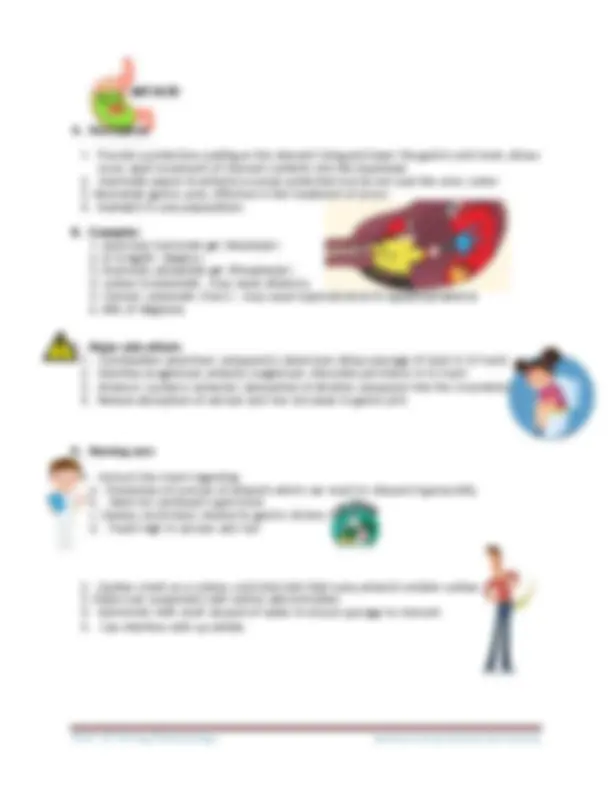
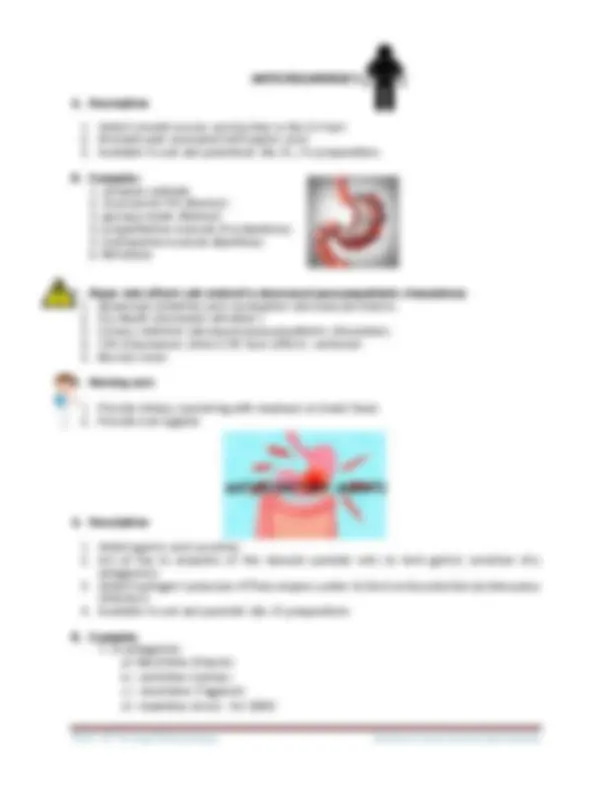
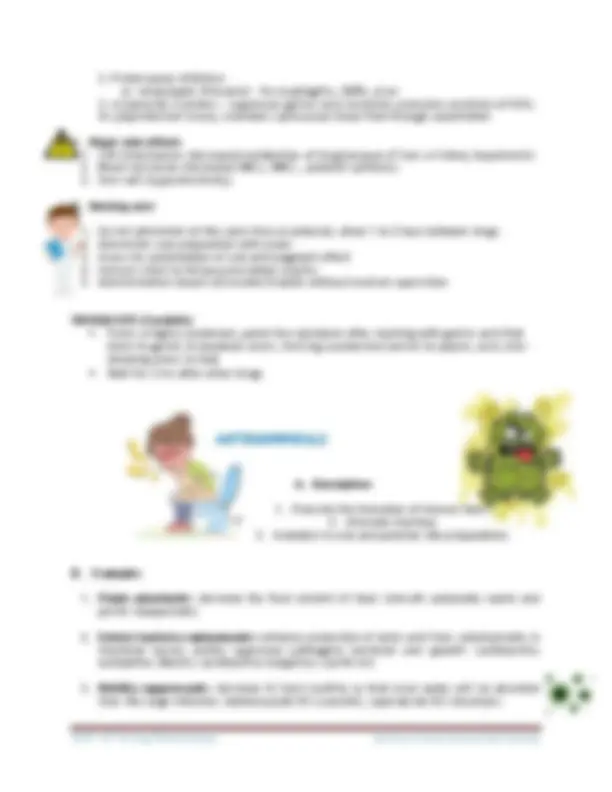
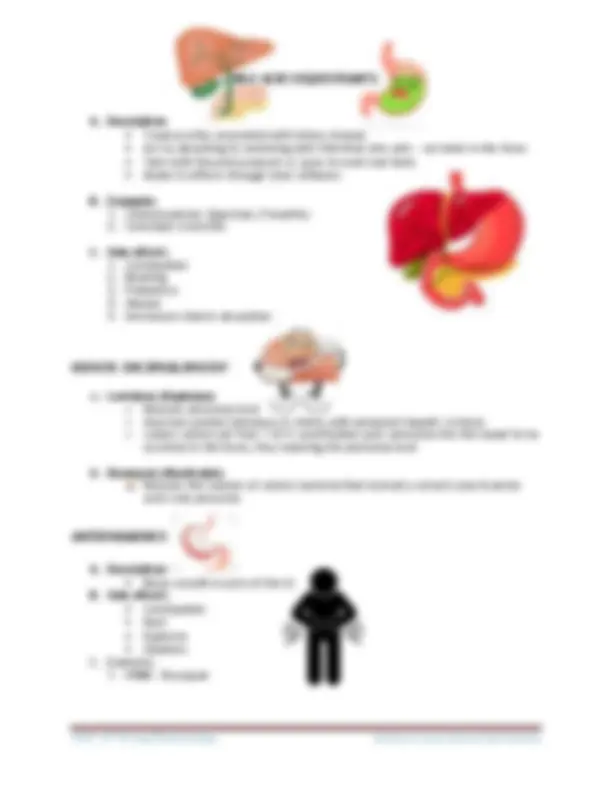
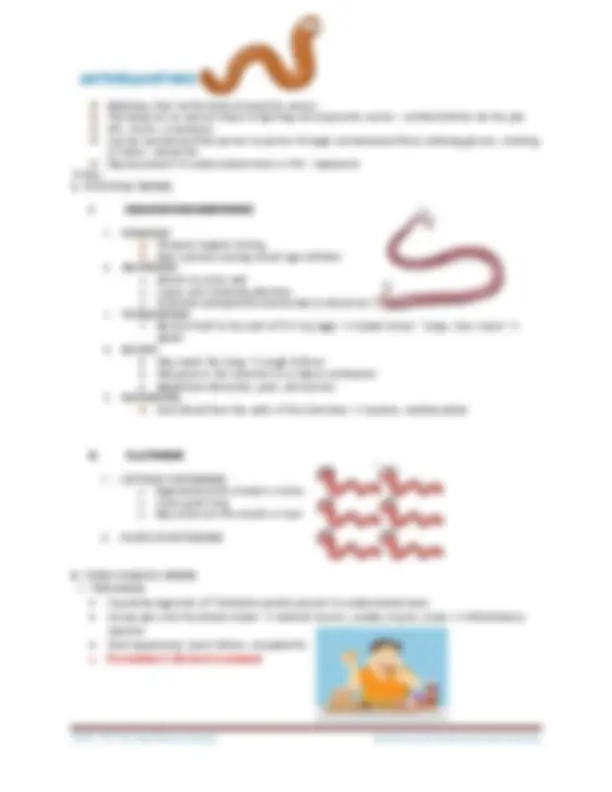
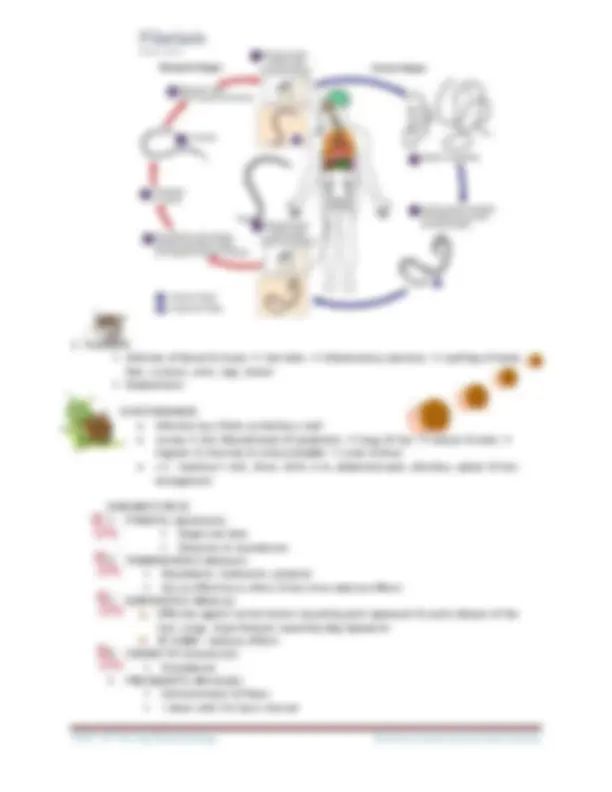


Study with the several resources on Docsity

Earn points by helping other students or get them with a premium plan


Prepare for your exams
Study with the several resources on Docsity

Earn points to download
Earn points by helping other students or get them with a premium plan
Community
Ask the community for help and clear up your study doubts
Discover the best universities in your country according to Docsity users
Free resources
Download our free guides on studying techniques, anxiety management strategies, and thesis advice from Docsity tutors
MODULE 3.5 - GASTRO. LECTURE NOTES
Typology: Lecture notes
1 / 12

This page cannot be seen from the preview
Don't miss anything!







A. Description
Stimulate the vomiting center & induce vomiting Used to treat acute poisoning
1. Apomorphine Controlled substance Given subq Emesis occurs 5-15 mins after subq. administration DO NOT GIVE to patients who are allergic to morphine or other opiates AE: depression, euphoria, respiratory depression, orthostatic hypotension 2. Ipecac syrup 30 cc or less cause no systemic, adverse effects Emesis occurs after 20-30 mins 200 - 300 mL of water may facilitate the emetic action DO NOT GIVE to patients who: a) Have altered LOC b) Have seizures c) Ingested corrosives d) Ingested petroleum distillates
A. Description
A. Description
A. Description
A. Description
A. Description
A. Description Treat pruritus associated with biliary disease Act by absorbing & combining with intestinal bile salts – secreted in the feces Take with flavored products or juice to mask bad taste Abate GI effects through stool softeners B. Examples
A. Lactulose (Duphalac) Reduces ammonia level Improves protein tolerance in clients with advanced hepatic cirrhosis Lowers colonic pH from 7 t0 5: acidification pulls ammonia into the bowel to be excreted in the feces, thus lowering the ammonia level B. Neomycin (Mycifradin) Reduces the number of colonic bacteria that normally convert urea & amino acids into ammonia
A. Description Relax smooth muscle of the GI B. Side effects Constipation Rash Euphoria dizziness C. Examples
Infections caused by insect bites (malaria, trypanosomiasis, leishmaniasis) Infections caused by ingestion or contact with the causal organism (amoebiasis, giardiasis, trichomoniasis) MALARIA Spread via the bite of Anopheles mosquito The plasmodium parasites: